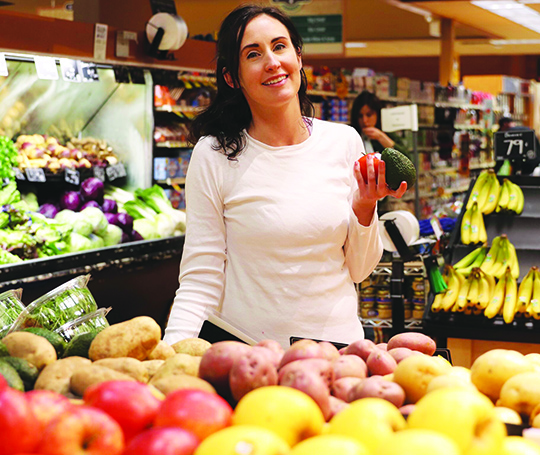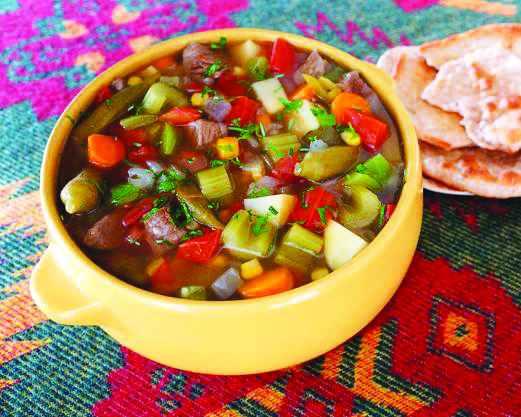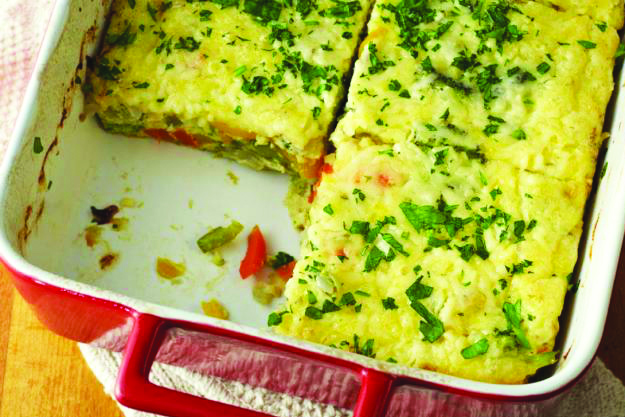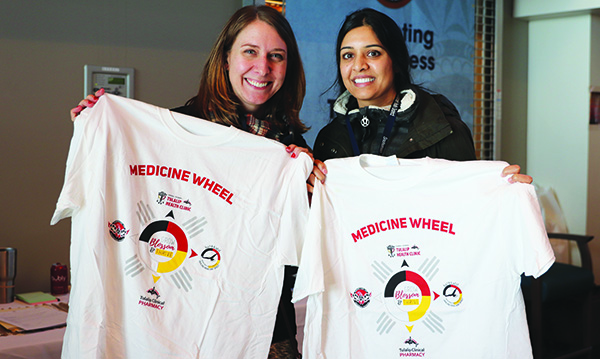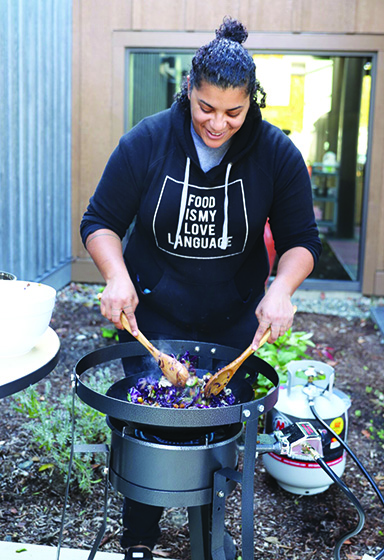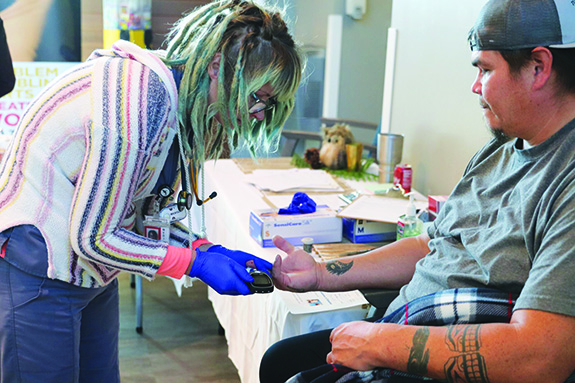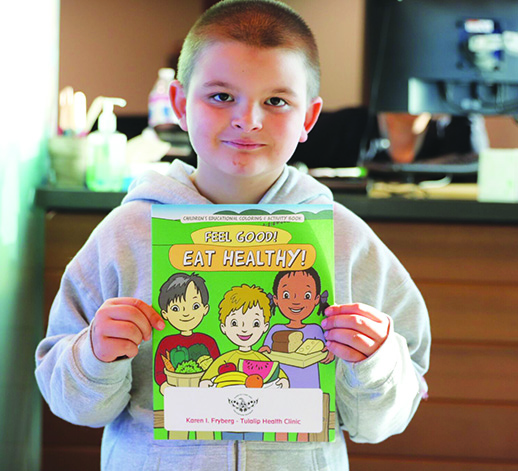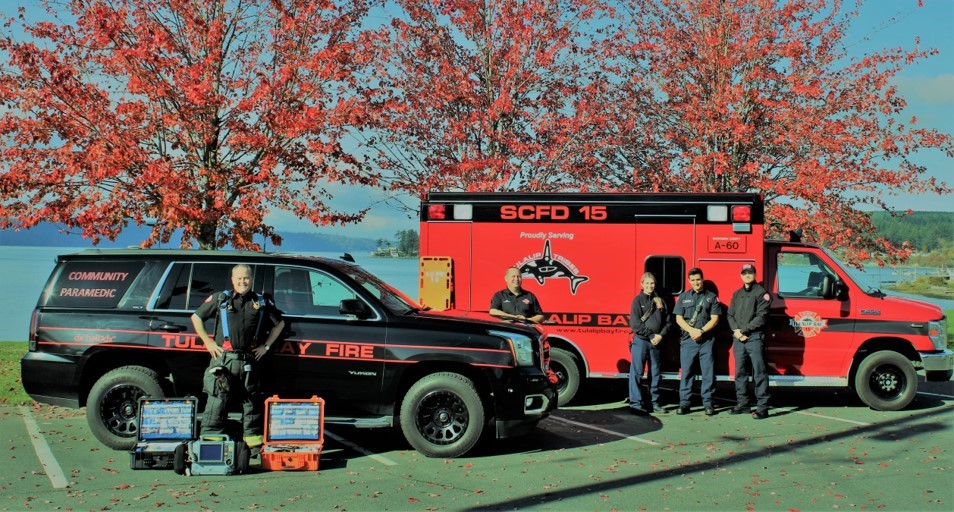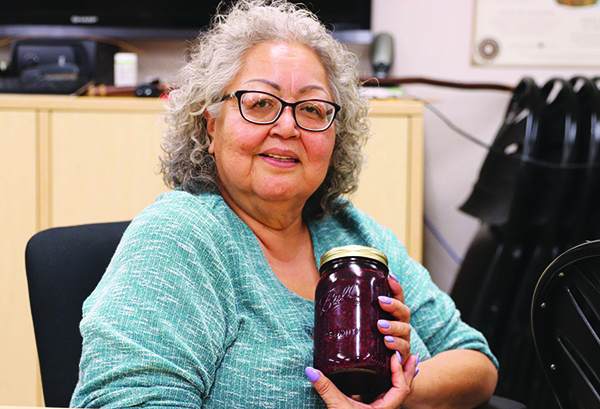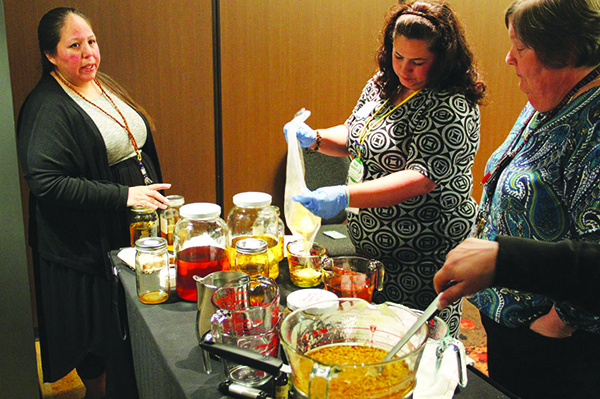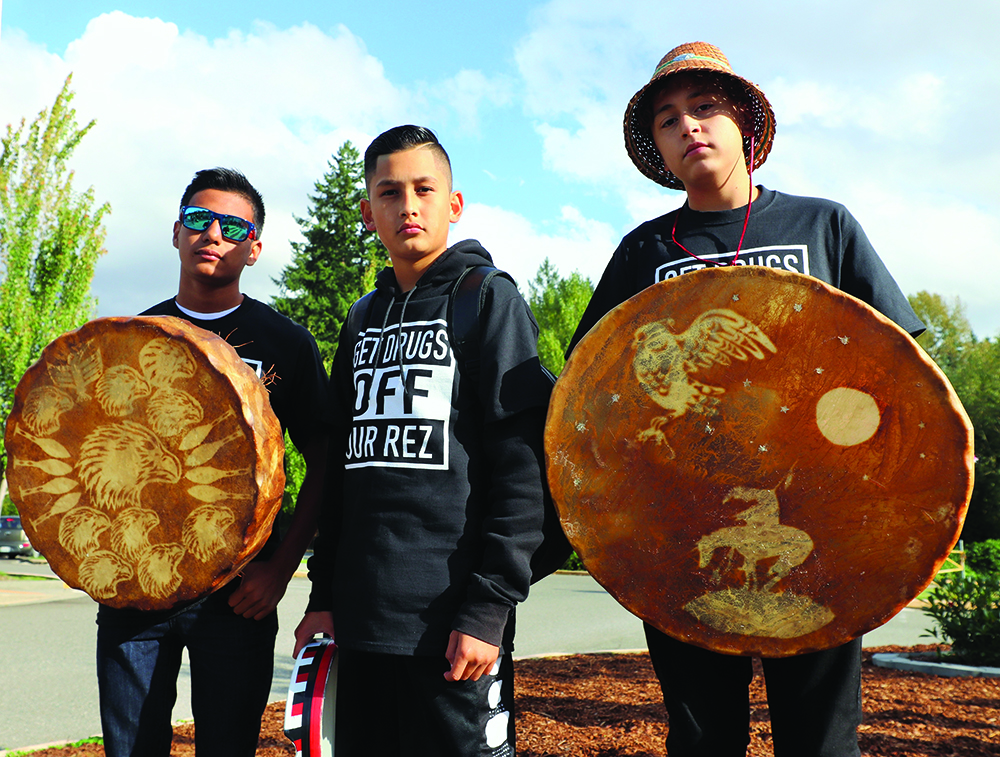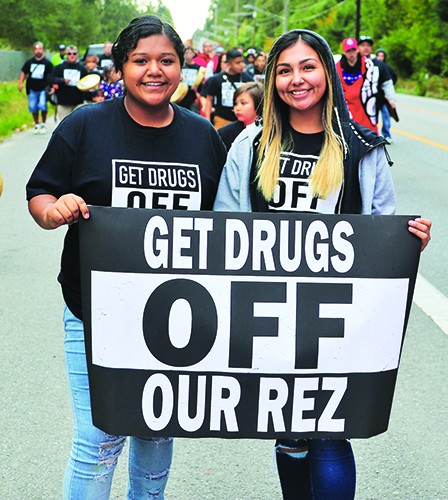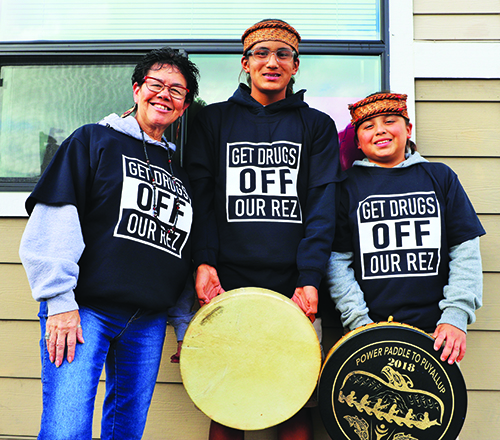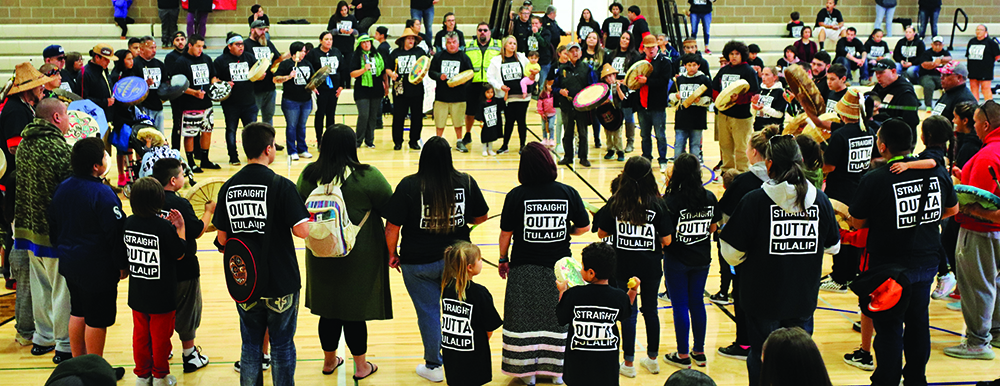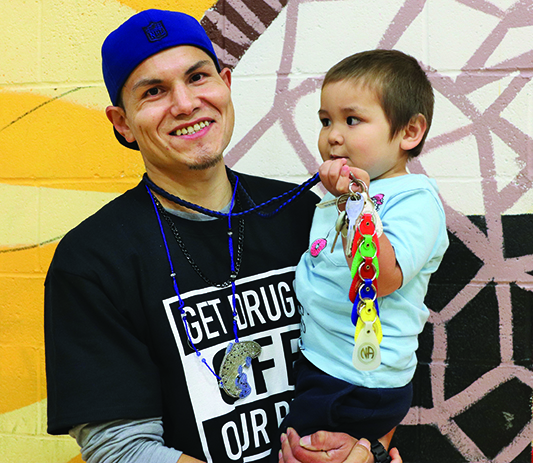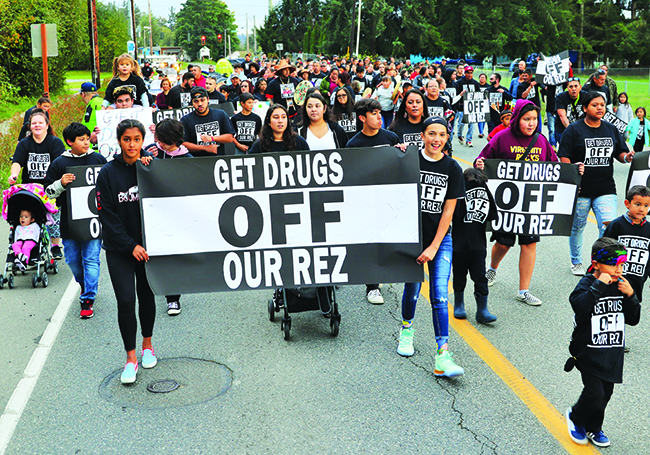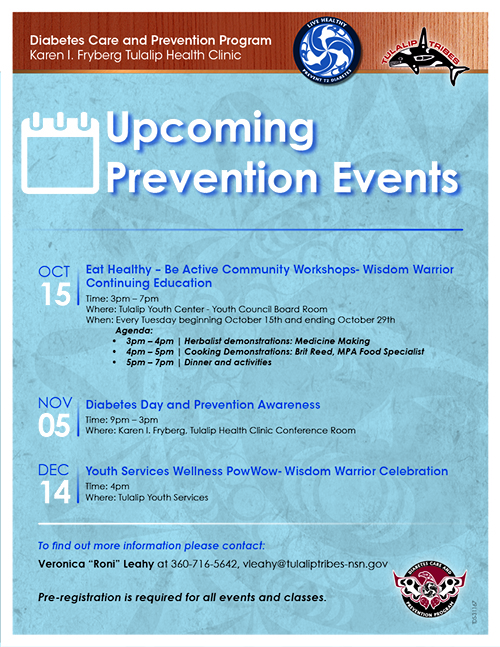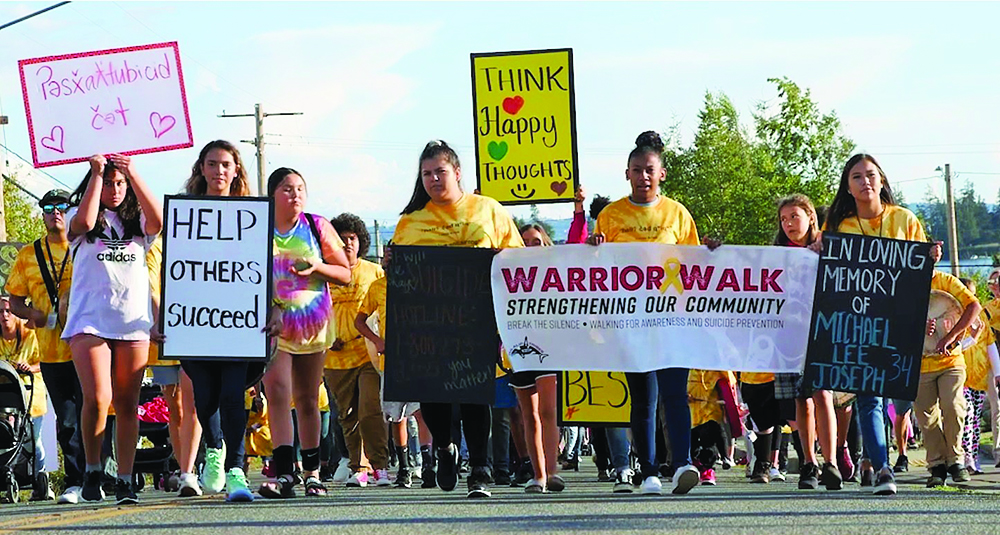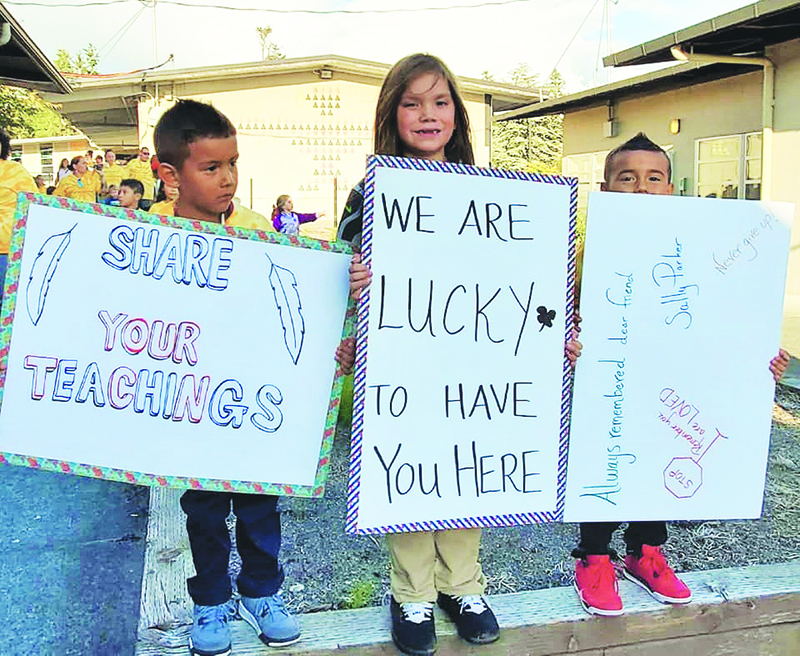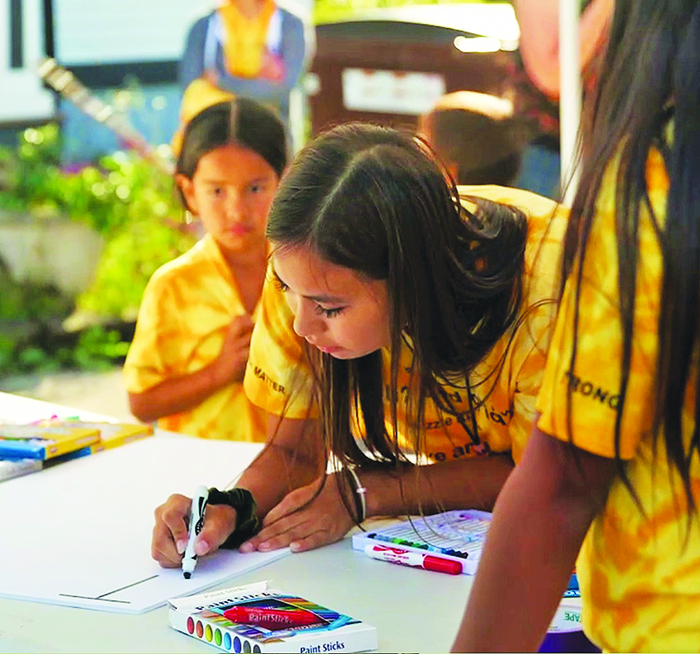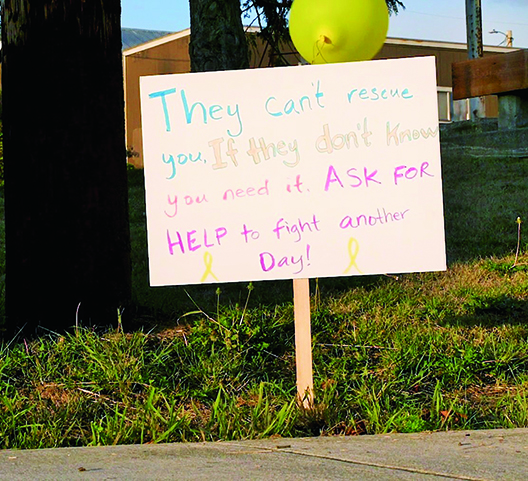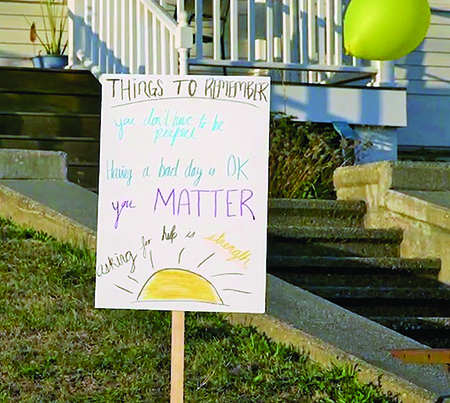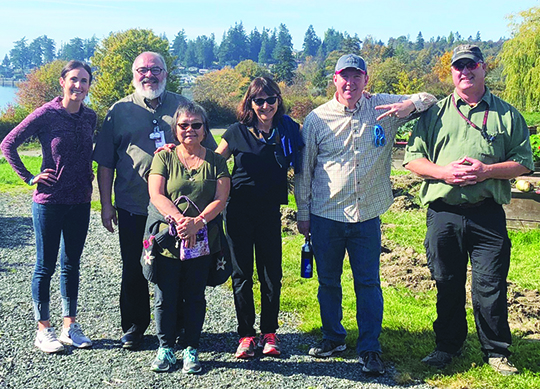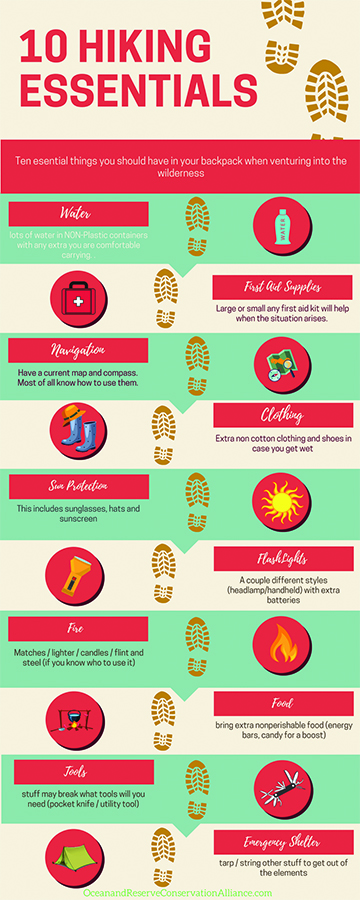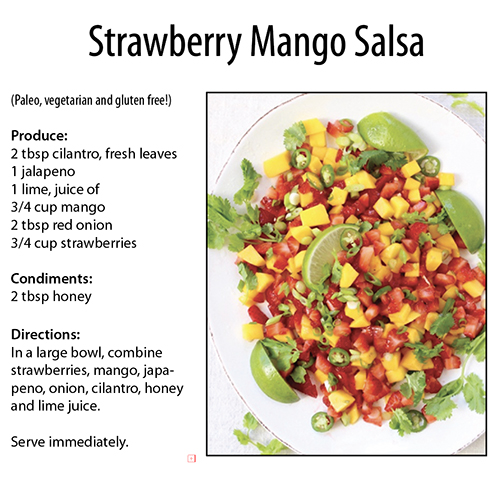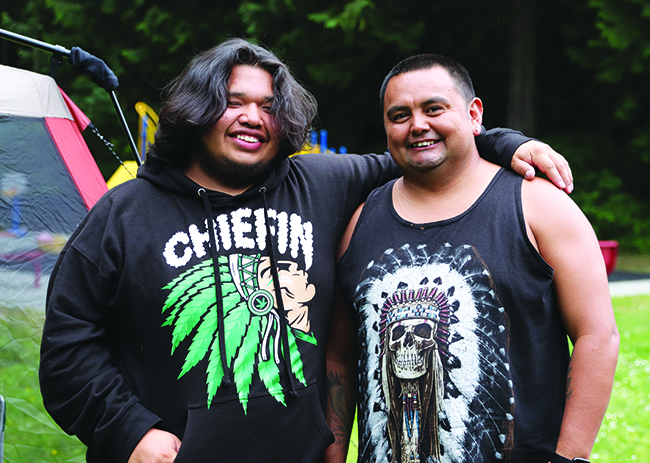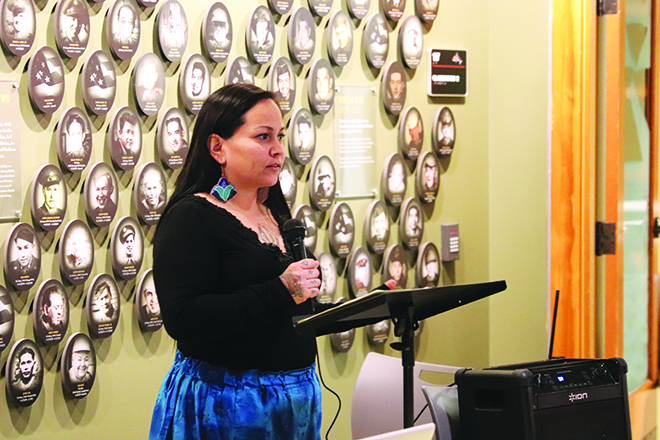
By Kalvin Valdillez
“My name is Natosha Gobin. I’m coming up on three-and-a-half years of my second round of sobriety,” shared the Tulalip tribal member to approximately one hundred community members. “When I was 21, I quit drinking right after my 21st birthday and I was sober for eight years. I’ve been teaching our language for almost twenty years now and it took a lot for me to realize, this second time around, the disservice I was doing to my job by drinking. The more we learn and reconnect with our ancestors and reconnect with our way of life, the more we realize that addiction is not our way. I have to apologize to my nieces and my children for normalizing my addiction. We have normalized addiction within our communities. It’s time for us to have more gatherings like this and say, this is not our way.”
Many happy tears were shed on the night of January 9th as people from all over Snohomish County gathered at the Hibulb Cultural Center. The celebration of sobriety, or wellbriety, has occurred every so often amongst the local recovery community at Tulalip for years. The gatherings took place namely at the Tulalip Resort Casino ballrooms and the Tulalip Dining Hall, and were hosted by passionate recovering addict and Tulalip tribal member, Helen Gobin-Henson. However, the wellbriety celebration is looking to become a staple event in 2020 as the Tulalip Problem Gambling program has adopted the wellbriety concept and will be hosting a celebratory dinner once a month throughout the year.
“In the spirit of unity to support health and wellness, we want to create a safe space for the community to gather and support each other in recovery. Whether you have one day or fifty years, we want to recognize your efforts in maintaining your sobriety,” said Robin Johnson, Substance Use Disorder Professional and Problem Gambling Counselor, who is approaching twenty years of sobriety herself.
Problem Gambling enlisted Native American Grammy Award Winner, Star Nayea, to host the event, who shared that she is celebrating her sobriety of seventeen years. The program also looked for guidance from Helen Gobin-Henson who was in attendance to share her story and celebrate with the community.
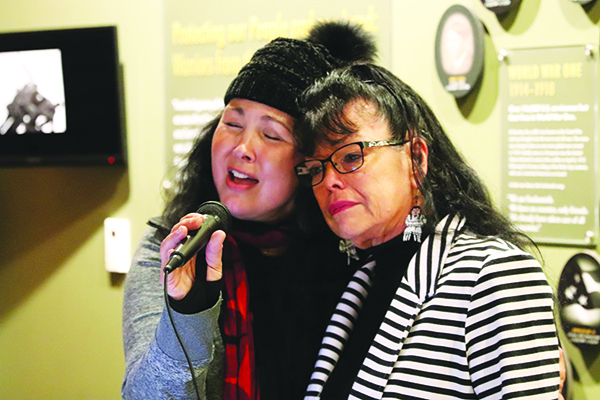
“There’s a lot of heart break when you’re recovering,” Helen tearfully admitted. “Keep fighting. Recovery works if you work it. I’m thankful for everyone, we praise you for coming together to honor your recovery. Stay safe and continue to walk with pride on the red road to recovery.”
Last year, the Problem Gambling program hosted a thirty-two-hour class at Tulalip called Recovery Coach Training. This course taught local recovering addicts, who were looking to help others, the essential tools on how to be supportive and help fellow addicts stay the course of sobriety. Six of those students who became certified recovery coaches were at the wellbriety dinner, cheering on their comrades in recovery, including Denise, a compulsive gambler who was caught embezzling money from her company in order to fuel her addiction.
“One of the things I learned about recovery coaching is you have to meet the person where they are,” Denise explained. “If you say you’re in recovery, you’re in recovery. It doesn’t matter how much time you have; a year, a day or a minute. Being a part of the recovery coach community and being a part of the solution for somebody else is something I embrace. If you are in recovery and made the decision that you want to pass on that message of hope, recovery coaching is the way. Let me walk with you and tell you what I’ve done, what worked for me and what didn’t. Let’s take a look at who you are today, and what you need to wake up in the morning and realize you’re going to be okay.”
One by one, community members stepped up to the open-microphone to share their personal story of sobriety. Some celebrating decades, some celebrating days – all equally met with rounds of applause that echoed throughout the cultural center halls.
“I graduated from Drug Wellness Court. I was the very first one,” said Verle Smith. “I did have a minor relapse of sorts after I graduated, but I got the opportunity to step up to the plate and figure out what my next addiction was, and it was gambling. I’m thankful for Robin, Problem Gambling and Family Services for leading me back to the red road of recovery because on the 20th I will have one year and I’m extremely proud of that.”
“The main reason I came tonight was to celebrate my recovery – nine months!” said Tulalip tribal member Winona Keeline. “This is the first time I’ve been in recovery and I just wanted to see the community come together and celebrate their journey. What stood out to me the most was how many of our youth were here and seeing that we are capable of coming together to celebrate life in a good way and show the youth a new way for our people to live.”
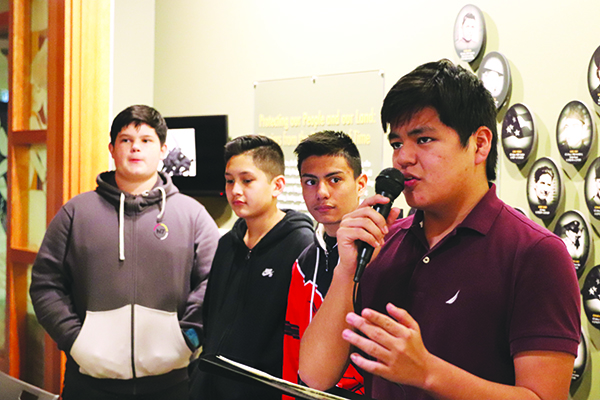
The Tulalip Youth Council offered the group a song and president, Kaiser Moses, followed up with some strong words to encourage people along their path of recovery.
“Thank you for showing each other that support for sobriety and taking back control of your lives and protecting your time,” Kaiser expressed. “One thing that I still carry with me that my mom always told me when I was little is that alcohol and other substances are like snakes. She told me a story Raymond Moses used to tell. There was once a guy who was walking up the mountain and it was really cold. There was a snake that was walking alongside him. The snake kept asking, ‘can you pick me up for warmth, it’s cold,’ and the guy kept refusing. But the snake was persistent and the guy eventually picked up the snake – and it bit him. The guy asked ‘why did you bite me?’ and the snake replied, ‘you knew I was a snake when you picked me up’. So, the moral is don’t pick up the snake or you will get bitten.”
A lot of knowledge, encouragement, pride and laughter was shared throughout the night. Wrapping up the two-hour event was a round of karaoke and a sobriety countdown. Starting at fifty, the community counted backwards to present day, celebrating the amount of time clean each person attainted.
“Tonight filled my heart,” Robin said. “The participants in our program worked hard, coming to group sessions every day and giving their all to their recovery, and it’s not acknowledged or celebrated nearly enough. They don’t know a lot of those people on the same path to recovery. This was a great opportunity for them to meet and share with each other. I wanted to show the community how hard our people are working to stay sober and allow them the opportunity to bring that education and knowledge back to the community, to heal the people from within.”
The Problem Gambling program is gearing up for a big year, beginning by hosting two upcoming Recovery Coach Trainings; one on January 18 and 19, the other on January 25 and 26. Both classes are held between the hours of 8:00 a.m. and 5:00 p.m. at the Tulalip Administration building. For further details, please contact Problem Gambling at (360) 716-4302.
